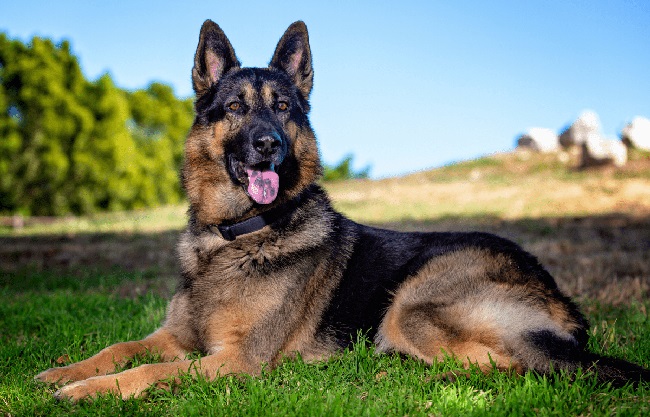German Shepherds are one of the world’s most popular and recognizable breeds, known for their intelligence, loyalty, and versatility. However, did you know there’s a variation that is quite literally a head above the rest?
Enter the Large German Shepherd, a breed variant known for its formidable size. This article will explore in detail the world of the Large German Shepherd, offering insights into their characteristics, care requirements, and much more.
The Large German Shepherd is a remarkable variation within the German Shepherd breed, combining the cherished traits of the classic German Shepherd with an impressively large size.
Whether you’re captivated by their formidable stature or their gentle, loyal nature, there’s no denying that the Large German Shepherd leaves a big impression.

Understanding the Large German Shepherd
Large German Shepherds, sometimes known as King Shepherds or Shiloh Shepherds, are not a separate breed, but a variation within the German Shepherd breed known for their Large size.
These dogs are bred selectively to accentuate their size while retaining the beloved qualities of standard German Shepherds.
Size and Physical Traits
On average, a Large German Shepherd can stand up to 31 inches tall at the shoulder and can weigh anywhere between 75-150 pounds, dwarfing the standard German Shepherd, which typically measures 22-26 inches in height and weighs between 50-90 pounds.
Despite their imposing size, Large German Shepherds retain the classic breed characteristics: a muscular build, a double coat of fur, and the familiar black and tan coloration. Their faces may appear more gentle and less angular than their standard-sized counterparts.
Personality and Temperament
In terms of personality, Large German Shepherds carry the same intelligence, loyalty, and protective nature of standard German Shepherds. They are often described as confident and calm, but can also be playful when the situation calls for it.
Care and Health Considerations
Caring for a Large German Shepherd largely mirrors the care for standard-sized German Shepherds. They require regular exercise to maintain their muscular build and mental stimulation to cater to their high intelligence.
However, due to their Large size, it’s important to be mindful of potential joint issues like hip and elbow dysplasia, which can be more prevalent in Large dogs. Regular vet check-ups can help catch and manage these issues early on.
Training and Socialization
Large German Shepherds, like all German Shepherds, are quick learners and respond well to positive reinforcement training techniques.
Early socialization is important to ensure they grow up to be well-rounded and confident dogs, comfortable around different people, environments, and other animals.
Conclusion
As with all dogs, owning a Large German Shepherd comes with responsibilities. Regular exercise, mental stimulation, a balanced diet, and routine vet check-ups are essential in ensuring your Large-than-life companion stays healthy and happy.
Understanding the unique needs and characteristics of the Large German Shepherd is the first step in providing the best care for these incredible dogs. In essence, the Large German Shepherd is a testament to the versatile nature of the German Shepherd breed.
With their impressive size, combined with their intelligence and loyal nature, they make wonderful companions for the right owners. As with any pet, proper care, understanding, and love are the keys to a long and fulfilling relationship with these majestic creatures.
























